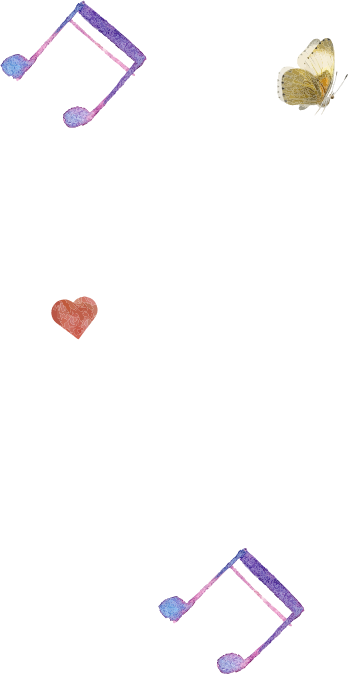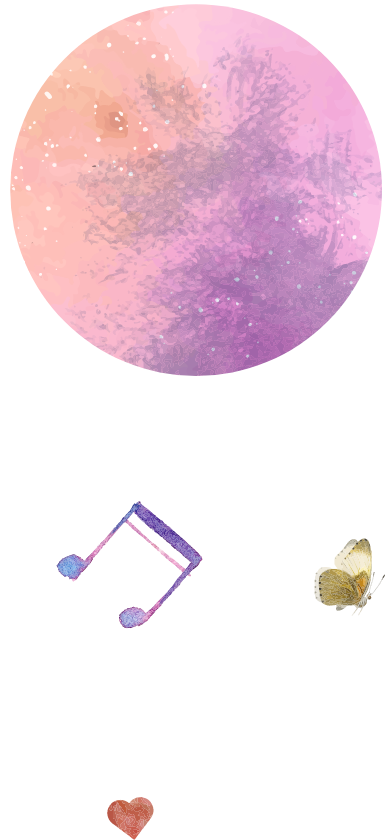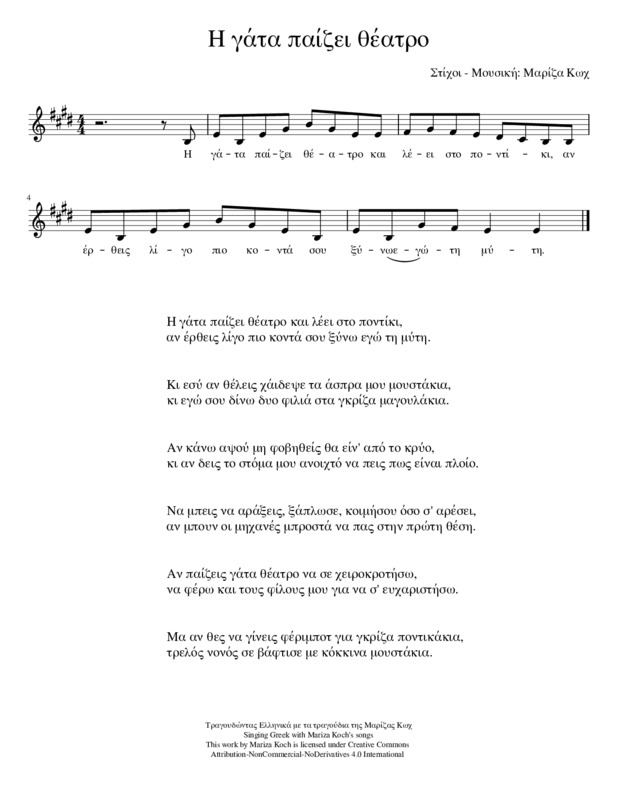
Hē gata paizei theatro

Hē gata paizei theatro
Pronunciation
Use of couplets as counting-out rhymes with rhythmic syllabic articulation of speech in order to improve the phonemic awareness (e.g. η-γά-τα-παί-ζει-θέ-α-τρο-και-λέ-ει-στο-πο-ντί-κι…) (ē-ga-ta-pai-zei-the-a-tro-kai-le-ei-sto-po-nti-ki…).
Speech Comprehension and Production
Understand the narrative element of escalation in the story (if you come a little closer, if you want to caress, if you see my mouth open, go in and relax). Extension of the song: written or oral creation of couplets with escalation of the story. On the occasion of the element of dialogue between the two characters (cat and mouse), create dialogues with other animals related to the food chain (lion-deer, shark-red mullet, swallow-worm, etc.). The pupils identify the element of irony [αν παίζεις θέατρο (an paizeis theatro, if someone mocks you), τρελός νονός σε βάφτισε (trelos nonos se vaphtise, when someone believes that something impossible will happen)].
Music Activities
Sing in staccato in order to convey the character and the movement of the cat. Perform the soft, skillful and sharp movement of the cat with rhythmic movement in the beat of the song, while simultaneously singing.
Use the song as a counting-out rhyme in a circle in order to get two pupils to play the roles of cat and mouse. Dramatization of the story by the two pupils, while the others sing in a circle around them (see interdisciplinary connections).
Musical improvisation that represents the two characters of the song.
Instrumentation of the song with rhythmic and melodic percussion instruments.
Use the song as a counting-out rhyme in a circle in order to get two pupils to play the roles of cat and mouse. Dramatization of the story by the two pupils, while the others sing in a circle around them (see interdisciplinary connections).
Musical improvisation that represents the two characters of the song.
Instrumentation of the song with rhythmic and melodic percussion instruments.
Cross-thematic Connections - Greek Culture
Interdisciplinary concepts: humor.
Creation of comics based on the story of the song, in pairs or small groups, with captions for the dialogues.
Dramatize the song starting with the phrase “Η γάτα παίζει θέατρο” (Hē gata paizei theatro, the cat is playing theater), using mimetic movements and / or hand puppets.
Render the lyrics or words of the song using funny mimetic movements [e.g. γάτα (gata, cat), ποντίκι (pontiki, mouse), μουστάκια (moustakia, mustache), μαγουλάκια (magoulakia, cheeks), etc.] at the same time with the song.
Four or five pupils cover themselves with a bedsheet and play the role of the cat. The pupils with the appropriate instructions of the teacher move in different directions, trying to coordinate with each other.
Creation of comics based on the story of the song, in pairs or small groups, with captions for the dialogues.
Dramatize the song starting with the phrase “Η γάτα παίζει θέατρο” (Hē gata paizei theatro, the cat is playing theater), using mimetic movements and / or hand puppets.
Render the lyrics or words of the song using funny mimetic movements [e.g. γάτα (gata, cat), ποντίκι (pontiki, mouse), μουστάκια (moustakia, mustache), μαγουλάκια (magoulakia, cheeks), etc.] at the same time with the song.
Four or five pupils cover themselves with a bedsheet and play the role of the cat. The pupils with the appropriate instructions of the teacher move in different directions, trying to coordinate with each other.
Age level
3-7 years old
7-11 years old
Language level
Beginner
Intermediate
Friendship
Theater
Animals
ta chrōmatista tragoudia




